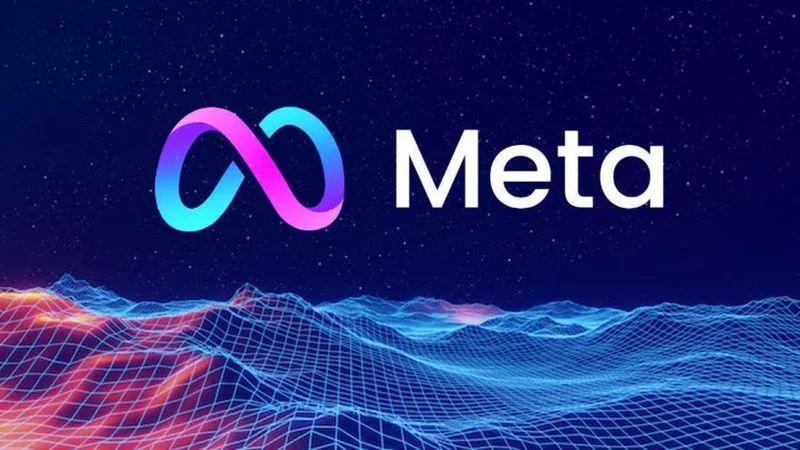Article Directory
Let’s be honest with each other. For the last couple of years, it’s been easy, almost fashionable, to laugh at Meta. We all saw the headlines, the memes about legless avatars, the staggering multi-billion-dollar losses from a division called “Reality Labs.” It felt like we were watching one of the world’s most powerful tech giants chase a digital ghost, a metaverse that nobody seemed to want, all while burning mountains of cash. The narrative was set: Mark Zuckerberg had lost the plot.
But something funny happens when you’re looking in one direction, waiting for the punchline of a joke. You miss the real magic trick happening just out of frame. While we were all fixated on the metaverse, Meta was quietly building something else. Something far more profound, and infinitely more powerful. The latest earnings reports, summarized in pieces like Meta Earnings: Strong Ad Revenue Momentum, but an Avalanche of AI Costs Is Coming, are our first real glimpse of it. A 26% year-over-year revenue surge to $51.2 billion, blowing past Wall Street's expectations. Daily users across its apps growing to an astonishing 3.54 billion people. These aren’t the numbers of a company fumbling in the dark. They’re the numbers of a giant that has found its footing on a new continent.
And that new continent is artificial intelligence. Not just as a tool, but as the foundational, animating spirit of the entire ecosystem.
The Engine Room of Tomorrow
When I first saw the updated capital expenditure forecast, I honestly just sat back in my chair, speechless. Meta is planning to spend between $70 and $72 billion in 2025, with plans for that to exceed a mind-boggling $100 billion in 2026, almost all of it earmarked for AI infrastructure. Let me try to put that into perspective for you. We’re not talking about buying a few thousand servers; we’re talking about an investment so colossal it rivals the cost of entire national infrastructure projects. This is the kind of spending that signals a company isn’t just entering a new market—it’s trying to create the market.
What are they building in this new engine room? They’re creating a pervasive intelligence layer—in simpler terms, it’s a system designed to understand context, predict needs, and facilitate connection on a level we’ve never seen before. This AI is being woven into the very fabric of Facebook, Instagram, Messenger, and WhatsApp. It’s the reason ad prices are up 10%, because the ads aren’t just being targeted better; they’re becoming more relevant, more helpful. The speed of this integration is just staggering—it means the gap between a user having a thought and the platform offering a solution is closing faster than we can even comprehend.

This is the kind of breakthrough that reminds me why I got into this field in the first place. For years, we’ve talked about AI in the abstract. Now, we’re seeing it deployed at a scale that affects nearly half the planet. And it forces us to ask a fundamental question: If this is what the AI can do for Meta’s ad business, what happens when that same intelligence is turned toward enhancing human connection itself?
From Social Network to Digital Companion
This is where I think everyone is missing the bigger picture. The skepticism around Zuckerberg’s vision is still palpable. People hear him talk about an AI that will “get to know you better and better” and they immediately think of privacy concerns or dystopian sci-fi. And we absolutely must have those conversations about ethics and responsibility. But to stop there is to miss the revolutionary potential.
Think about the invention of the printing press. It wasn’t just about making cheaper books. It was about democratizing access to information, sparking renaissances, and fundamentally rewiring how humanity shared knowledge. I believe we’re at a similar inflection point. Meta’s pivot isn’t just from the metaverse to AI. It’s a pivot from building a place (a “social network”) to building a presence (a “digital companion”).
Imagine a future where WhatsApp doesn’t just deliver your messages but helps you draft the perfect one for a difficult conversation. Imagine an Instagram that doesn’t just show you vacation photos but helps you plan a trip to see that friend you haven’t seen in years. This is the promise of Meta’s massive AI investment. It’s not about replacing human interaction, but augmenting it. It’s about using machine intelligence to break down the barriers of distance, time, and even social awkwardness that keep us apart.
The $4.43 billion quarterly loss in Reality Labs suddenly looks different through this lens, doesn’t it? Perhaps the metaverse wasn’t the final destination. Perhaps it was the world’s most expensive R&D project, a necessary exploration into presence and digital identity that laid the conceptual groundwork for the AI-driven companionate technology they’re building now. What does a relationship with an AI look like, and how can it deepen our relationships with each other?
We're Building a Relationship with Our Technology
Let’s call this what it is. Meta isn’t just a social media company anymore. It’s in the business of building a personalized, ambient intelligence designed to integrate into the very rhythm of our lives. The stock price, the analyst targets ranging from $616 to over $1,100—those are just tremors on the surface. This optimism is reflected in forecasts such as Meta Platforms (NASDAQ: META) Stock Price Prediction for 2025: Where Will It Be in 1 Year (Oct 30). The tectonic shift is happening underneath. We’re witnessing the birth of a new kind of technology, one that doesn’t just connect us, but understands us. The real question isn’t whether Meta’s stock will hit new highs. It’s what we will become when our digital world knows us better than we know ourselves.
